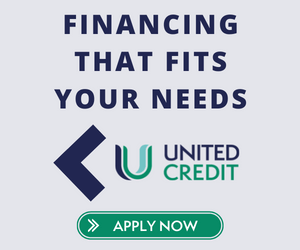Published on: March 23, 2020 | Updated on: March 12, 2024
Magnetic resonance imaging (MRI) is a medical technique that uses radio waves and a strong magnet connected to a computer to obtain detailed images of inside organs and tissues.
These images help distinguish between healthy and sick tissue. Other scanning techniques, such as computed tomography (CT) or X-ray, produce inferior pictures of organs and soft tissue than MRI.
When Is an MRI Necessary?
An MRI may be ordered for a variety of reasons by your doctor. In general, an MRI can assist your doctor in determining the source of your health problem so that they can appropriately diagnose you and suggest a treatment plan.
An MRI scans a specific part of your body based on your symptoms. The scans seek to diagnose:
- Tumors
- Lung damage
- Heart damage
- Eye/ear issues
- Sports injuries
- Spinal conditions
- Coronary artery disease
- Abnormalities of the brain
- Digestive tract/abdominal issues
- Bone diseases and conditions
- Prostate issues (in men) or pelvic issues (in women)
- Breast cancer
Risks of an MRI
MRI scans are risk-free and pain-free treatments. If you have claustrophobia, you may find it uncomfortable, but most individuals can overcome it with the help of a radiographer. The magnetic fields and radio waves used in MRI scans have been studied extensively to see if they represent harm to the human body.
There has been no evidence to imply that there is a risk, making MRI scans one of the safest medical treatments accessible. However, MRI scans may not be advisable under certain circumstances.
Because powerful magnets are used in an MRI, any metal in a patient’s body that attracts the magnet might be dangerous. Even if metal objects are not attracted to the magnet, they can alter an MRI scan. The following are some examples of potentially dangerous devices:
- Prosthetic metal joints
- Synthetic heart valves
- Heart defibrillator implant
- Pacemaker
- Metal clips, screws, pins, stents, surgical staples, or plates
- Cochlear implants
- Metal fragments in the body (shrapnel)
What to Expect During the Exam
An MRI exam requires very little preparation. Unless otherwise directed, continue to take your regular prescriptions as usual. For an MRI, there are just a few dietary limitations. The requirements for those examinations will be explained to you.
The exam might take anywhere from 45 minutes to an hour depending on the bodily area.
During the MRI scan, you must remain completely motionless. You may be asked to hold your breath for up to 30 seconds depending on the bodily area being checked.
Both ends of the magnet are permanently open. It is well-lit, and there is a fan to keep the patients cool. There is also a two-way intercom system for patient and technician communication. The part of the body that will be scanned will be positioned in the magnet’s center.
You will hear a loud intermittent hammering noise during the imaging process. Earplugs or headphones will be supplied to reduce noise levels during the process. The technician will also present you with an alarm button that you may use to notify the technologist if you suffer any pain throughout the MRI test.
An injection of intravenous MRI contrast is required for some MRI scans. If you feel any discomfort during the injection, tell the technician.
Interpreting the Results
A radiologist writes the MRI reports. These reports frequently contain a lot of medical jargon that may appear to a patient with no medical background as a foreign language. MRI terms such as coronal, enhancing, MRA, axial, and artifact all have unique meanings related to MRI findings.
Because of these technical words, your doctor will usually sit down with you and explain the meaning of the MRI results. An MRI result is examined and analyzed by these specialists. This enables them to best communicate the findings to other doctors. The information may then be used to suggest the most effective treatments for the patient.
Follow-Up
If the MRI results are abnormal, patients may need to see their doctor. If an aberrant or possibly abnormal finding is seen, the radiologist may advise taking the following measures, depending on the circumstances:
- Additional imaging, such as an MRI, ultrasound, X-ray, CT scan, or nuclear medicine imaging may be required
- Biopsy
- MRI findings are compared to lab results and/or the patient’s symptoms.
- If feasible, comparing the MRI to previous imaging scans
If the MRI did not reveal what the doctor was seeking, the patient will most likely have another MRI scan with different views or a special imaging technique, such as a magnetic resonance angiography (MRA) to examine the patient’s blood vessels, an fMRI, or an MRI with contrast to look more closely at what the doctor is looking for.
Patients may receive one of the aforementioned imaging tests instead of or in addition to an MRI.
A possibly abnormal MRI result may necessitate a follow-up MRI to determine if the region has altered. The doctor may arrange them as soon as feasible in either of these instances.
When an MRI is used to diagnose a medical ailment, a doctor will discuss treatment options with the patient. Another MRI (or more) may be ordered so that the doctor may check for changes in the abnormality and evaluate if the therapy is effective. This might be done at a later date.
Sources
Footnotes
- Hartwig V, Giovannetti G, Vanello N, Lombardi M, Landini L, Simi S. Biological effects and safety in magnetic resonance imaging: a review. International journal of environmental research and public health. 2009;6(6):1778-98.
- Currie S, Hoggard N, Craven IJ, Hadjivassiliou M, Wilkinson ID. Understanding MRI: basic MR physics for physicians. Postgraduate medical journal. 2013;89(1050):209-23.
- Tsai LL, Grant AK, Mortele KJ, Kung JW, Smith MP. A practical guide to MR imaging safety: what radiologists need to know. Radiographics. 2015;35(6):1722-37.
- Westbrook C, Talbot J. MRI in Practice. John Wiley & Sons; 2018.
- Hashemi RH, Bradley WG, Lisanti CJ. MRI: the basics: The Basics. Lippincott Williams & Wilkins; 2012.
- Brown MA, Semelka RC. MRI: basic principles and applications. John Wiley & Sons; 2011.
References
- The Basics of MRI Interpretation. Geeky Medics. Accessed 2/25/2024.
- Magnetic Resonance Imaging (MRI) of the Brain and Spine: Basics. Case Western Reserve University. Accessed 2/25/2024.
- Magnetic Resonance Imaging (MRI) Scanning. TeachMe Anatomy. Accessed 2/25/2024.
- Magnetic Resonance Angiography (MRA). Johns Hopkins Medicine. Accessed 2/25/2024.
- Nuclear Medicine. National Institutes of Health. Accessed 2/25/2024.
CELLAXYS does not offer Stem Cell Therapy as a cure for any medical condition. No statements or treatments presented by Cellaxys have been evaluated or approved by the Food and Drug Administration (FDA). This site contains no medical advice. All statements and opinions are provided for educational and informational purposes only.
Dr Pouya Mohajer
Author
Pouya Mohajer, M.D. is the Director of Spine and Interventional Medicine for CELLAXYS: Age, Regenerative, and Interventional Medicine Centers. He has over 20 years of experience in pain management, perioperative medicine, and anesthesiology. Dr. Mohajer founded and is the Medical Director of Southern Nevada Pain Specialists and PRIMMED Clinics. He has dedicated his career to surgical innovation and scientific advancement. More about the doctor on this page.
Dr Pejman Bady
Contributor
Dr. Pejman Bady began his career over 20 years ago in Family/Emergency Medicine, working in fast-paced emergency departments in Nevada and Kansas. He has served the people of Las Vegas as a physician for over two decades. Throughout this time, he has been met with much acclaim and is now the head of Emergency Medical Services in Nye County, Nevada. More about the doctor on this page.










